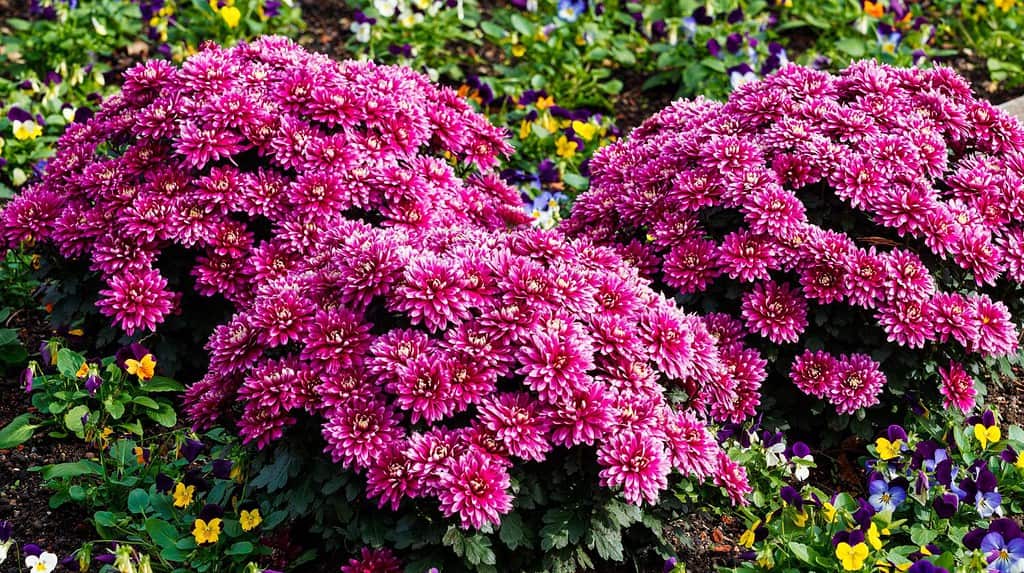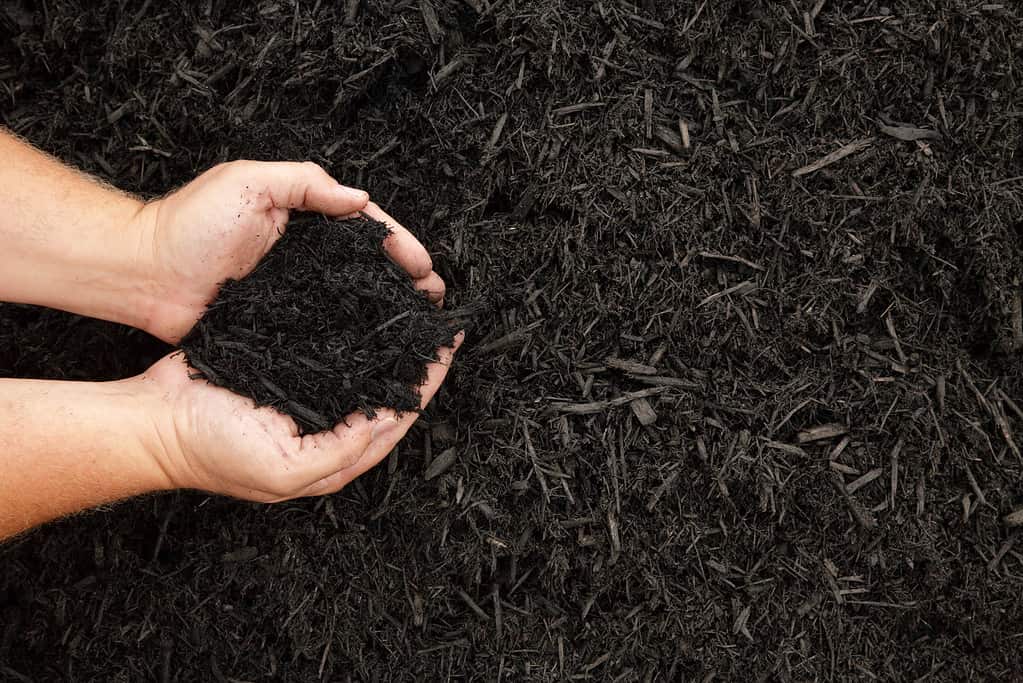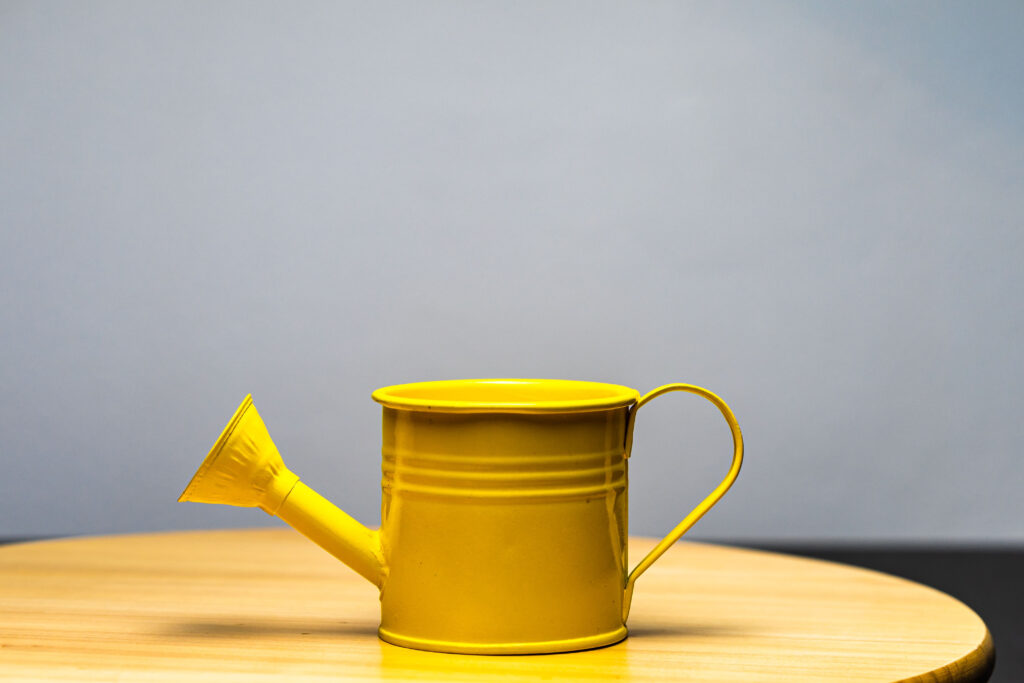Who doesn’t love the bright and friendly color of mums? These lovely flowers put a smile on faces and lighten the landscape. It is no wonder why these beautiful plants are so popular. But you may wonder if they can survive winter or if you should replant every year. If you have a perennial mum, it will return year after year as long as it is properly cared for. Here are 6 tips to ensure your mums survive the winter.
What are Mums?

Mums are beautiful flowering plants that officially go by the name chrysanthemums. They come in lots of different colors.
©MacBen/Shutterstock.com
Most of us refer to a group of gorgeous flowering plants as mums because the full name is a mouthful. They are technically chrysanthemums (Chrysanthemum) and belong to the Asteraceae (daisy) family. You may also know them as old-fashioned mums, hardy garden mums, or heritage mums.
These lovely flowers are native to Europe, Asia, and the Americas. Not all are perennials, but many are. They are winter hardy in USDA Hardiness Zones 4 to 8 and make a fantastic ground cover. Their showy flowers come in a dazzling range of colors and blossom well into the fall. You can keep these flowers in containers, dotting your patio or backyard. Or you can plant them as a border, hedge, or groundcover. They make a lovely perennial addition to any yard, provided you take steps to help your mums survive the winter.
6 Tips for Keeping Mums Alive in the Winter
Since mums are long-lasting flowers, you can expect blossoms well past the time other flowers fade. Ensuring this magic can be repeated the following year is easy. It just takes a handle of simple steps before winter hits with a vengeance.
#1 – Cut it Back
Perennial mums can survive some relatively harsh winters. But not if they still have all their foliage intact. Ice buildup can cause significant damage or even kill your plant. So preventing that is key. The first step to take is to cut your mum back. Leave some stems so new growth can develop the following spring. However, you can prune those stems to a few inches above soil level. Wait until the first hard frost, which should kill any remaining leaves.
#2- Add Mulch

There are lots of different mulch options on the market. You need to pick the one that is right for your needs.
©iStock.com/witmerphotography
The next step involved in helping your mums survive the winter is to add a nice thick (but airy) layer of mulch around the stems. The stems still need to breathe. And the last thing you want is moisture buildup on the plant, which can cause it to rot. Consider sourcing some branches from evergreen trees, which will allow proper airflow. However, don’t cut them from any public evergreens. Search for downed branches instead. Or replace that with a loosely applied layer of straw that isn’t packed up against the stems.
#3 – Add More Soil
The ground will often shift as it goes through thawing and freezing cycles all winter. This movement can damage the rootball if it becomes too extreme. While it isn’t completely avoidable, you can mitigate the impact. Pile up some additional soil around the base of the plant or add a thick layer of mulch, making sure it doesn’t go up around the stems. The additional layer will help insulate the roots and protect them from freezes.
#4 – Move the Containers
Many people choose to keep their mums in containers, which allows them the chance to move pots around as needed. One of those times when a new location is necessary is during the winter. Bring your potted mums into a sheltered location with plenty of bright, direct sunlight.
#5 – Water as Needed

Only water your mums when the soil has dried out.
©iStock.com/Wirestock
Unlike many perennials that overwinter, mums still need adequate moisture. That isn’t a problem in areas that receive a decent amount of snow or rain during the winter. This natural moisture will typically be enough to nourish the mums. However, in drier areas, occasional watering may become necessary. The most important thing to remember is that ice buildup is the enemy. So choose a warmer day and gently remove the mulch from the base of the plant. Bottom water to prevent splashback on the branches.
#6 – Cut Back Dead Stems
Once winter has mostly run its course, there is one additional step to take to ensure your mum thrives in the spring and summer. That is to cut back any dead stems. Wait until the weather has started to warm up. Then remove the mulch layers and prune any dead stems. This step will send a message to the mum that the time for new growth is near. It will encourage fuller branching and more captivating flowers.
The photo featured at the top of this post is © StopperOhana/Shutterstock.com
Thank you for reading! Have some feedback for us? Contact the AZ Animals editorial team.







